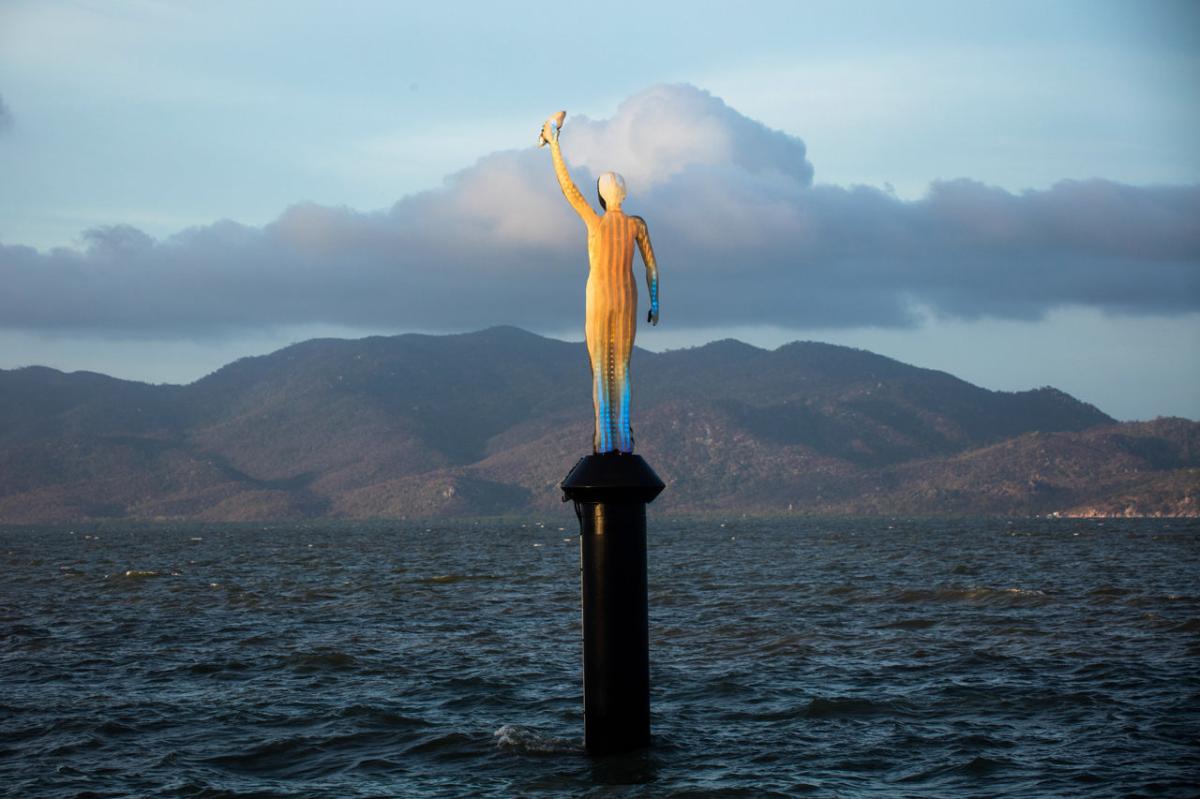This story was originally published by Atlas Obscura and is reproduced here as part of the Climate Desk collaboration.
How can we see the impact of rising ocean temperatures? For the residents of Townsville, a vibrant city on Queensland’s coast, a new public artwork just off their shores reminds them each day of the challenges facing Australia’s Great Barrier Reef.
The enormously biodiverse reef, named a World Heritage Site in 1981, is unlike anywhere else on the planet — a serious drawcard for scientists, tourists, and divers, who flock to Australia for a chance to experience the world’s largest coral reef formation. But in recent years their flocking has taken on a new urgency. The Great Barrier Reef’s health — like that of coral reefs everywhere — is at risk from rising ocean temperatures, pollution, and coastal development.
When coral gets stressed by temperature fluctuations or sediment deposits, it can change from a vibrant-hued wonder to a sad white shade. Known as coral bleaching, this phenomenon was first recorded on the Great Barrier Reef on a massive scale in 1998 — which also happened to be the hottest summer in a century. It can take decades for... Read more
